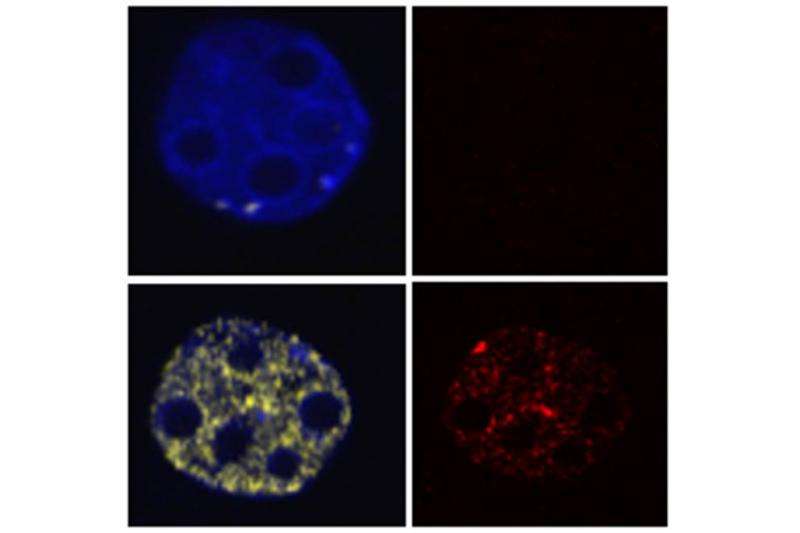What happens in the cell nucleus after fertilization

A team of scientists at the Helmholtz Zentrum München shows changes in the immediate environment of DNA after the ovum and sperm fuse to form the zygote. The results suggest why all conceivable somatic cells can develop from the germ cells. The study has been published in the journal Genes and Development.
Months before the often-cited miracle of birth occurs, numerous events take place that science still does not completely understand. For instance, this includes the question of how a single cell can be the origin of all subsequent cells in the future organism. Exploring how this is possible is the objective of Prof. Dr. Maria-Elena Torres-Padilla, Director of the Institute of Epigenetics and Stem Cells (IES) at the Helmholtz Zentrum München and Professor for stem cell biology at the Ludwig-Maximilians-Universität Munich.
"We are particularly interested in the events that are required when the cells are to divide so many times and develop in so many different ways, for example cells from the skin, and the liver, and the heart," the researcher explains. In a current study, she and her team approached this problem by examining the so-called chromatin, which refers to the DNA and the proteins (histones) around it. "We looked at how certain histones are changed after fertilization, which allowed us to explain a new mechanism."
Small attachments, big effects
The authors discovered that the molecule Suv4-20h2, a so-called histone methyltransferase, travels over the chromatin and attaches small chemical changes (dubbed methyl groups) to the histones. When the addition of these chemical changes occurs, the cell is constrained in its division and development, Torres-Padilla explains. But once fertilization occurs, the attachments disappear and the fertilised ovum can develop into a new organism.
In order to confirm these results, the researchers used an experimental model to test the effect of keeping the Suv4-20h2 active in the fertilized ovum. "We were able to demonstrate that in this case, the methyl groups remain on the histones," explains first author Andre Eid, doctoral candidate at the IES. "This arrests the development and the cells did not progress beyond the first division."
In further experiments, the team was able to show that this mechanism is probably based on the fact that the methyl groups on the histones lead to a defect during the duplication of the genetic material, referred to as replication. This defect causes then a replication 'check point', whereby the cell cycle comes to a standstill.
"Our results have given us insight into the complex connections between the chromatin and the ability of cells to develop into other types of cells - so-called totipotency," Torres-Padilla states as she puts the results into perspective. This is an important step both for human embryology and for the understanding of certain cancers in which the cells display very similar mechanisms that affect their rate of growth.
More information: André Eid et al. SUV4-20 activity in the preimplantation mouse embryo controls timely replication, Genes & Development (2016). DOI: 10.1101/gad.288969.116
Journal information: Genes & Development
Provided by Helmholtz Association of German Research Centres



















